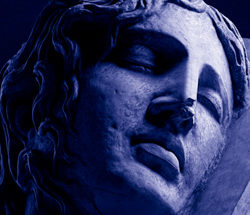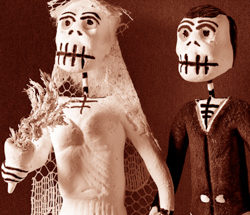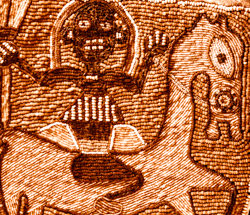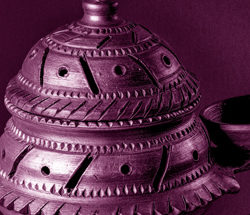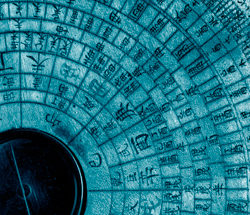Imagining a Rain Dance
From the exhibit Exploring Objects, Fears, and the Future
Mask made for collectors, Mexico.
Circa 1950s. 3-28625.
In traditional Nahua contexts, dancers could appeal to the god Tlaloc to ask for rain on behalf of their community. In the process of creating this exhibit, however, we discovered that the mask seen here—although it was originally cataloged as a Tlaloc mask—is certainly not. Dr. Fernando Nava, an anthropologist at the Universidad Nacional Autónoma de México has provided clarification. The beard on this mask suggests it is actually a representation of a European man, and it is made of metal, as opposed to traditional wood. The coyote ornaments would also likely not be found on a traditional mask. What is more, there is no evidence that pre-Hispanic dancers wore masks when dancing for Tlaloc. In Nahua communities today, masked dancers do conduct rain dances, but not to Tlaloc. Through a blending of indigenous and European traditions, they dance to the Santa Cruz, or to a Christian cross in the mountains.
The mask must have been created expressly for tourists or collectors, and it is not uncommon that faces on objects from Mexico are misidentified as Tlaloc. We have decided to include this mask in the exhibit because it raises questions about power and imagination with regard to fear, protection, and uncertain futures. Did the person who purchased this mask find fascination in the idea of a Nahua rain dance or of a cultural context where rain could be scarce, ironically not knowing that this mask was completely unrelated?


